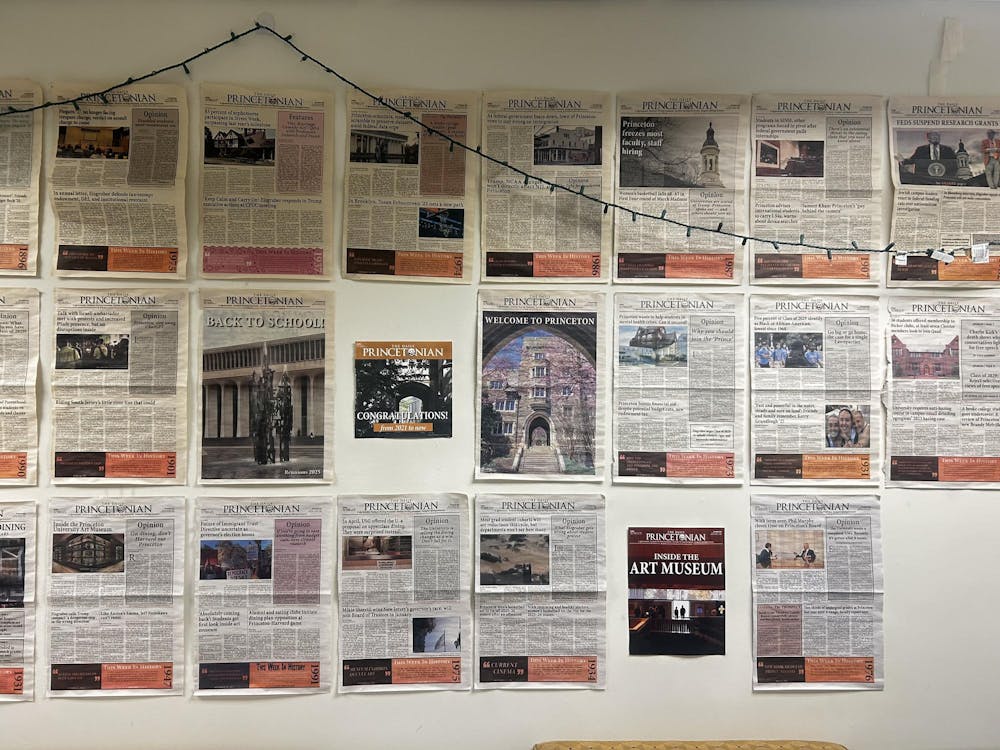My freshman year, I stepped foot on the Princeton campus prepared to encounter a sea of Caucasian, upper-class, preppy faces only to be pleasantly surprised by students from many ethnic, racial and financial backgrounds.
The University continuously works on eliminating its non-diverse stereotype, and most members of the community applaud moves in this direction. But one often-ignored minority in particular is wanting more in numbers and attention than any other: students with disabilities.
When was the last time you saw a student with a disability on campus? The problem does not lie in your eyesight. There are simply very few of them. Only 36 undergraduate students report that they have disabilities, or 0.8 percent of the University community. Given that disabilities affect one in five Americans, we must pause to consider the campus situation.
Are people with disabilities less intelligent? Less motivated?
Hardly. More likely the lack of physical accessibility or administrative support — as well as an unfriendly atmosphere — immediately deter these students from even considering Princeton.
For one day, try not to use the stairs. Look for an elevator or a ramp. More often than not you'll find that they simply do not exist.
You don't need to enter a building to encounter difficulties avoiding stairs. Try going from Prospect Gardens to the Wilson courtyard, from Richardson to the U-Store or from Firestone plaza to an eating club. You'll quickly see why there have not been any wheelchair-bound students at Princeton for quite some time.
Most of the daily struggles a student with a disability faces are not as obvious as lack of ramps and elevators. A hearing or learning disability can often be hard for an outside observer to passively detect. These students, though, continuously confront the reality of attending a school without a program for students with disabilities. No resource office, no support center, no full-time staff. Princeton, one of the richest universities in the country, provides them with Associate Dean of Undergraduate Students Sandra Silverman, whose responsibilities partly consist of handling what she quickly points out "is not a program." She does an admirable job, but one person can fulfill the needs of only so many students.

The students with disabilities are left, to a great extent, to their own means. Providing equal opportunity sometimes means making special arrangements for disabled students. Is aiding a blind student with books-on-tape giving her an advantage? Is providing a hearing-impaired student with a translator inappropriate?
The numbers themselves point to a discriminatory policy on Princeton's behalf. The University does not openly resist the admission of a student with a disability, but it does not care enough to put in the effort required both morally and legally. Why would a student with a disability come to Princeton and struggle with a physically inaccessible campus and a lack of administrative support while other schools openly recruit them and make it clear that all will be done to accommodate them?
Skeptics may wonder why the University should invest the effort and expense to attract more students with disabilities. Legal obligations stated in the Americans With Disabilities Act aside, we want a diverse community. Students who have faced different challenges throughout their lives can enrich the University campus not only with their minds and experiences, but also simply with their presence. They can contribute to the diversity on campus, to the spectrum of human life. They stand as living models of perseverance, motivation and grace. And when students leave this place to enter the real world they will no longer feel uncomfortable approaching a co-worker who seems a little different.
Build it and they will come. Add more administrative staff, create a resource office and make the campus physically accessible. Do it for diversity, do it for inclusiveness, do it for them and do it for us. Nathan Arrington is a classical architecture major from Westport, Conn. He can be reached at arington@princeton.edu.








